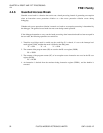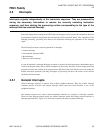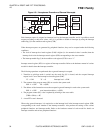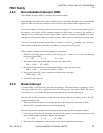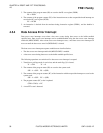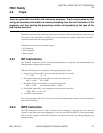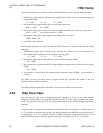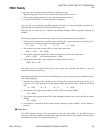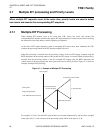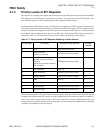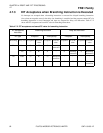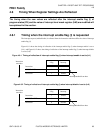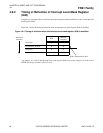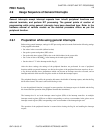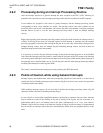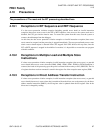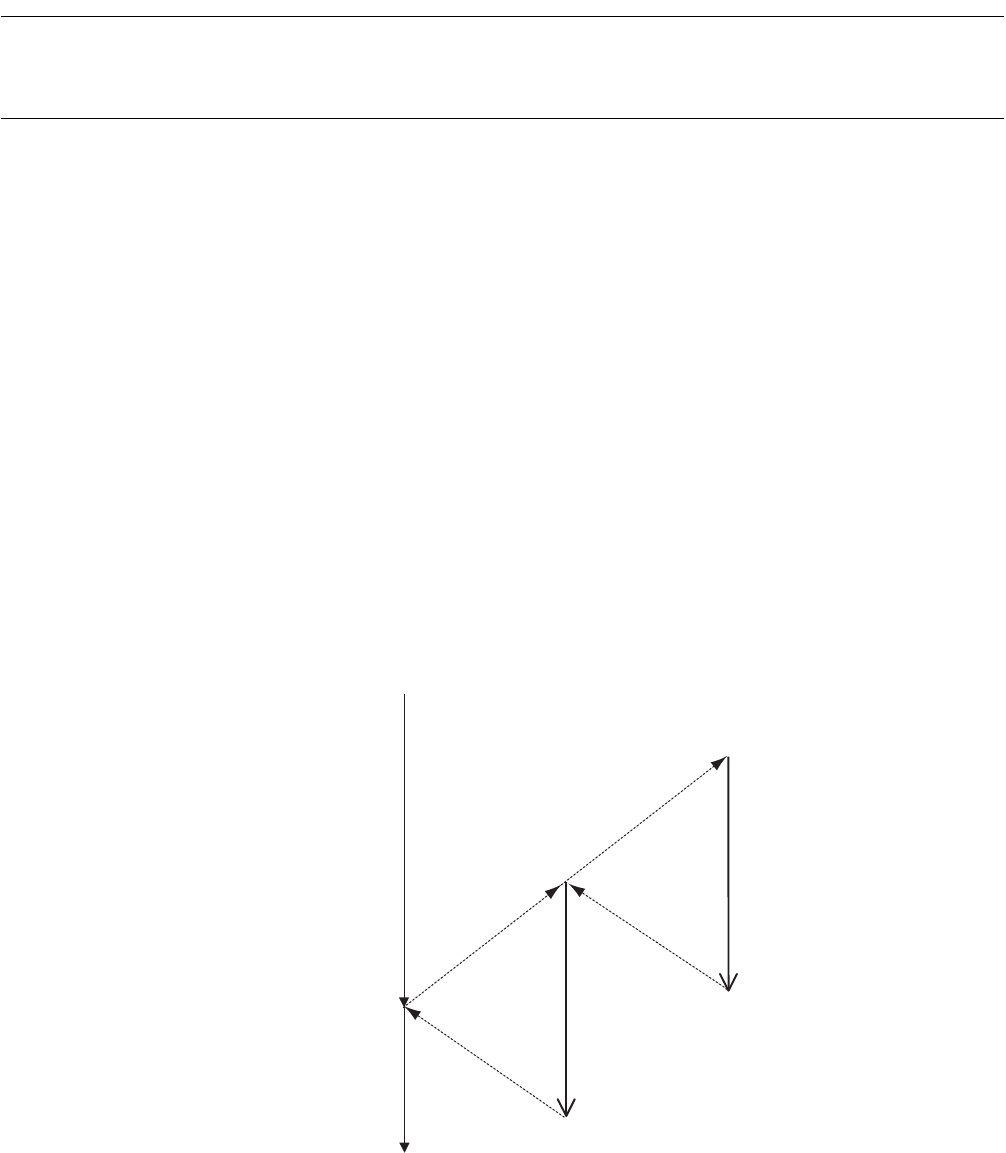
FR81 Family
60 FUJITSU MICROELECTRONICS LIMITED CM71-00105-1E
CHAPTER 4 RESET AND "EIT" PROCESSING
4.7
4.7 Multiple EIT processing and Priority Levels
When multiple EIT requests occur at the same time, priority levels are used to select
one source and execute the corresponding EIT sequence.
4.7.1 Multiple EIT Processing
When multiple EIT requests occur at the same time, CPU selects one source and executes the
corresponding EIT sequence and then once applies EIT request detection for other sources before executing
the instruction of the entry address, and this operation gets repeated.
At the time of EIT request detection, when all acceptable EIT sources have been exhausted, the CPU
executes the processing routine of the EIT request accepted in the end.
When the processing is returned from the processing routine of the last EIT request accepted using the
RETI instruction, the processing routine of the last but one EIT request is executed. When the processing is
returned from the processing routine of the first accepted EIT request using the RETI instruction, the
control returns to the user program after having processed a series of EIT processes. Figure 4.7-1 shows an
example of multiple EIT processing.
Figure 4.7-1 Example of Multiple EIT Processing
For example, if A, B, C are three EIT requests that have occurred simultaneously, and have been accepted
in the order of B, C, A, the execution of the processing routine will be in the order A, C, B.
Priority level
User program
(High) NMI generated
(Low) NMI instruction executed
Processing routine
of INT instruction
(2) Secondly executes
(1) First executes
Processing routine of NMI



